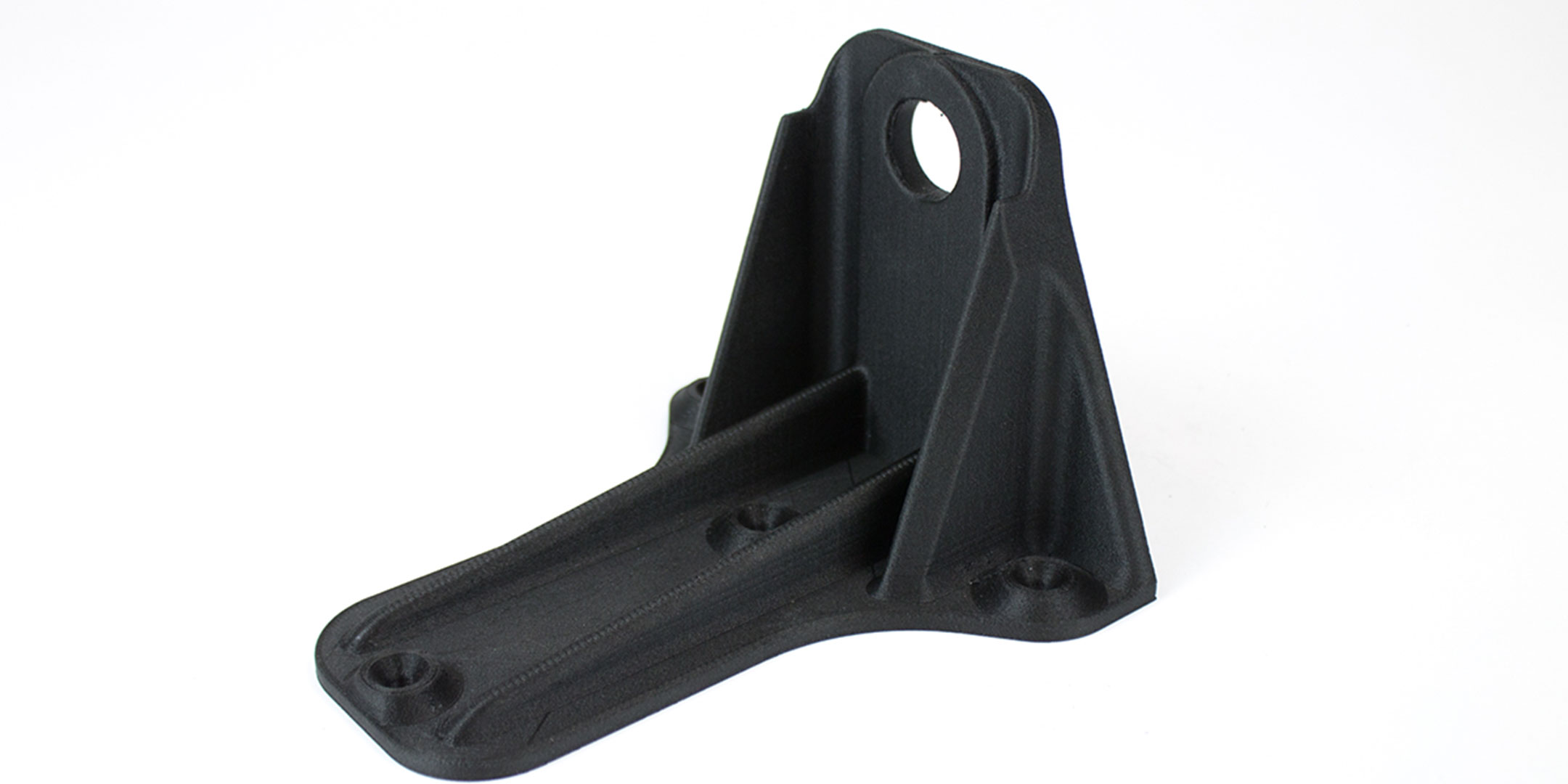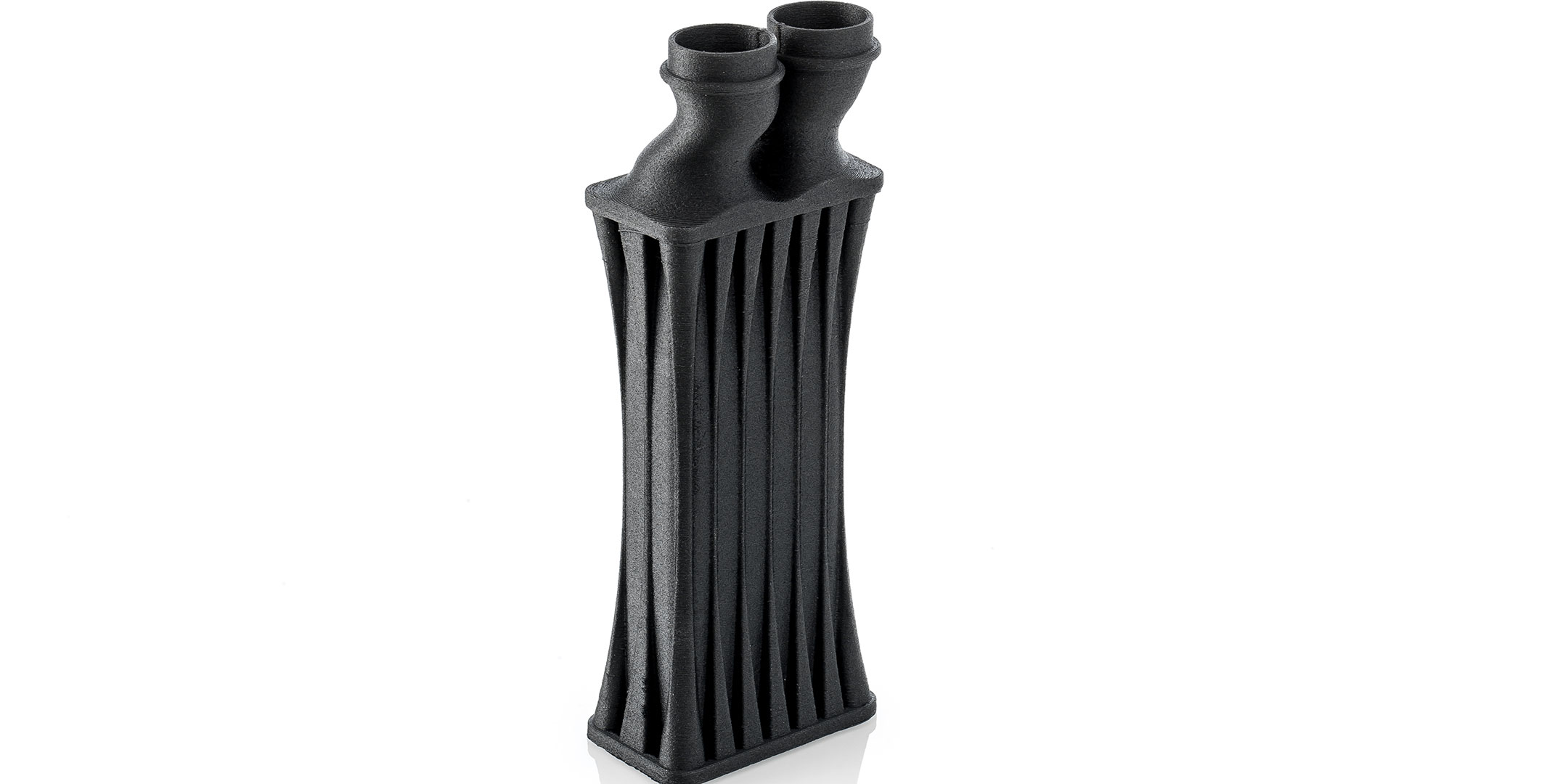"Temperature-resistance" refers to a substance’s ability to withstand prolonged exposure to high temperatures.
Why is temperature resistance important?
Temperature-resistant 3D printing materials offer better mechanical performance, wear resistance, and chemical resistance at high temperatures than those without. They are also able to maintain their properties longer at high temperatures, resulting in parts that are more reliable and cost less to keep in good condition.
Common uses of temperature-resistant materials
Any application that requires constant or prolonged exposure to high temperatures presents an opportunity for temperature-resistant materials. Companies within the manufacturing, aerospace, and automotive industries design and print temperature-resistant parts to achieve improved performance in stressful, high-temperature environments.
Eventuri, for example, which manufactures car intake systems for certain BMW and Audi models, creates functional prototypes using temperature-resistant materials.
A 3D printed intake prototype for the Audi RS 5 created by Eventuri
Owens Corning, a world leader fiberglass composites, roofing and insulation, uses its XSTRAND™ line of composite materials to create parts that are temperature-resistant.
Owens Corning's XSTRAND™ line of composite 3D printing materials offers good thermal stability
What else should you know?
Vicat softening temperature. Also known as Vicat hardness. The temperature at which materials with no definite melting point, such as plastics, soften. This is useful to know when selecting the right temperature-resistant material for a given application.
Melting temperature. The temperature at which a semi-crystalline material turns into a flowing liquid.
Glass transition temperature (Tg). The temperature at which an amorphous (non-crystalline) material changes from a solid to a liquid.
Heat deflection temperature (HDT). The temperature at which a substance will begin to deform under a certain load. HDT is of special interest to engineers, as it provides insight into the performance of a 3D printed part.
Commonly used base materials. Nylon, PC, and CPE+ are often used to create temperature-resistant 3D printing materials.
Commonly used additives. Glass and carbon-fiber are frequently used in applications in which stiffness, temperature deflection, or other mechanical properties are important. These are added to a base material that best fits the overall application.
Controlled print environment. When printing with temperature-resistant materials, the use of the Ultimaker S5 Air Manager is recommended to ensure a more controlled build volume during the printing process. This holds especially true for amorphous materials, for which glass transition temperature is important – increasing the importance of a controlled build volume.
Our temperature-resistant materials partners
The following are some of Ultimaker’s material partners that offer temperature-resistant materials. You can find more on the Ultimaker Marketplace.
DSM Additive Manufacturing
LEHVOSS Group
LUVOCOM 3F PAHT® CF 9891 BK is a high-temperature, carbon fiber-reinforced, polyamide-based material. It provides high strength, stiffness, and minimized water uptake.
A part printed with LEHVOSS Group's temperature-resistant LUVOCOM 3F PAHT® CF 9891 BK
"In 3D printing, PLA, ABS, and PET-G materials cannot be used above 60 °C – or even lower," Thomas Collet, Head of 3D Printing Materials at LEHVOSS Group, said. "So the question is what you want to define as temperature-resistant. For 3D printing, we define all materials with higher temperature resistance above these traditional materials as temperature-resistant."
BASF
A part printed in BASF's temperature-resistant BASF Ultrafuse PAHT CF15
"The 15% carbon-fiber content ensures stiff and strong parts, while the fibers also contribute to an increased temperature resistance, making this filament a perfect engineering material," Roger Sijlbing, Head of Sales Additive Extrusion Solutions at BASF, said.
Jabil
Jabil PA 4035 CF is a carbon-fiber PA12 copolymer that provides greater stiffness, strength, and toughness over similar products on the market. Its high carbon-fiber loading provides superior tensile strength and modulus, while the PA12 base promotes relatively high ductility and ease-of-handling.
"Temperature-resistant materials are gaining momentum, especially when it comes to producing critical manufacturing aids, such as jigs, fixtures, and tooling, where temperature requirements exceed those of typical additive manufacturing materials," Matt Torosian, Director of Product Management at Jabil, said. "Ultimaker and Jabil Additive are developing engineered materials to support applications requiring higher temperature performance to produce strong, durable parts with added complexity and functionality – much faster and with much lower costs than traditional manufacturing methods."
Interested in learning more about Ultimaker’s temperature-resistant material partners? Visit the temperature-resistant materials page on the Ultimaker Marketplace.
You can also explore Ultimaker’s range of 3D printers that are compatible with temperature-resistant materials.
























